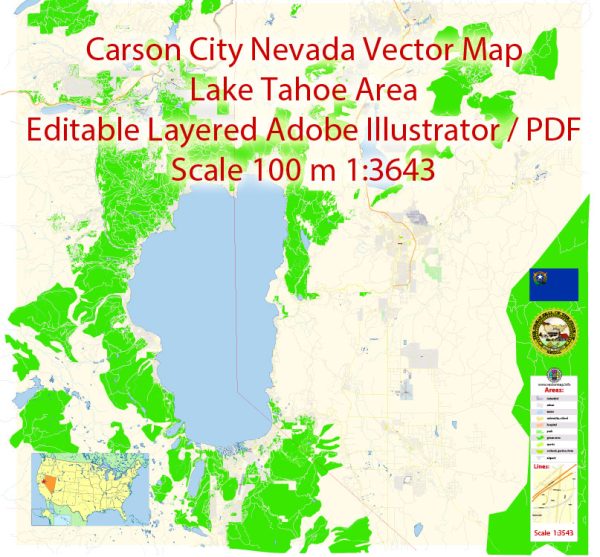Carson City, Nevada, is the capital of the state of Nevada, United States. It has a rich history that is closely tied to the development of the American West, particularly during the mid-19th century. Here’s a brief description of Carson City’s history:
- Early Inhabitants: Before European settlers arrived in the region, the area around Carson City was inhabited by various indigenous peoples, including the Washoe tribe. These Native Americans had lived in the Great Basin region for generations.
- Settlement and Silver Rush: The city’s history is closely connected to the discovery of the Comstock Lode, one of the richest silver ore deposits in the United States. In 1858, two prospectors, Peter O’Reilly and Patrick McLaughlin, stumbled upon a silver vein in the nearby Comstock Range. This discovery led to a massive silver rush, and the town of Carson City was established in 1858 as a trading post and supply center for the Comstock mining communities.
- State Capital: Carson City was designated as the capital of the Nevada Territory in 1861, and it continued as the state capital when Nevada gained statehood in 1864. The city was named after the frontiersman Kit Carson.
- The Virginia and Truckee Railroad: Carson City was a vital hub for the transportation of silver and other goods from the Comstock mines to the rest of the country. The Virginia and Truckee Railroad, which ran between Virginia City, Reno, and Carson City, played a crucial role in this process.
- State Government: As the state capital, Carson City became the seat of Nevada’s government. The Nevada State Capitol building, constructed between 1869 and 1871, is a prominent landmark in the city and houses the state legislature.
- Decline of the Silver Industry: The Comstock mining boom began to decline in the late 19th century, which had a significant impact on the city’s economy. However, Carson City remained the capital and continued to serve as a government and administrative center.
- Modern Carson City: Today, Carson City is known for its government institutions, including the state government and the Nevada State Museum. It retains a historic feel, with some well-preserved 19th-century buildings. The city is also surrounded by natural beauty, including the nearby Lake Tahoe and the Sierra Nevada Mountains, making it a gateway to outdoor recreation.
In summary, Carson City, Nevada, has a history deeply intertwined with the Comstock Lode silver rush, the development of the American West, and its role as the state capital. It continues to be an essential part of Nevada’s political and cultural landscape.


 Author: Kirill Shrayber, Ph.D.
Author: Kirill Shrayber, Ph.D.